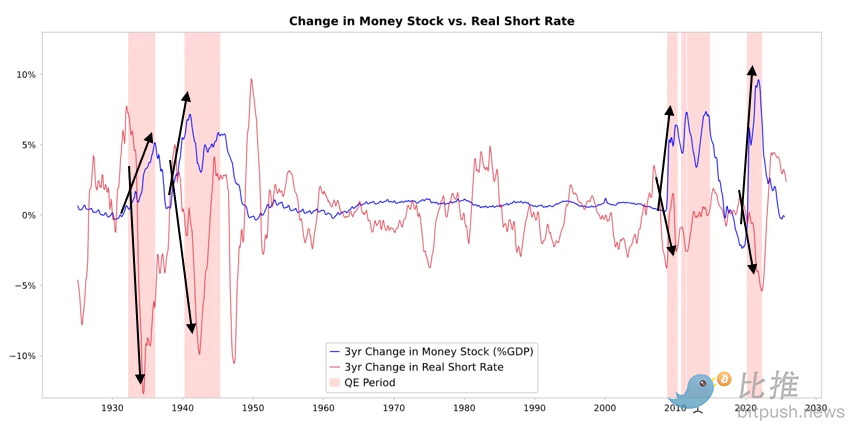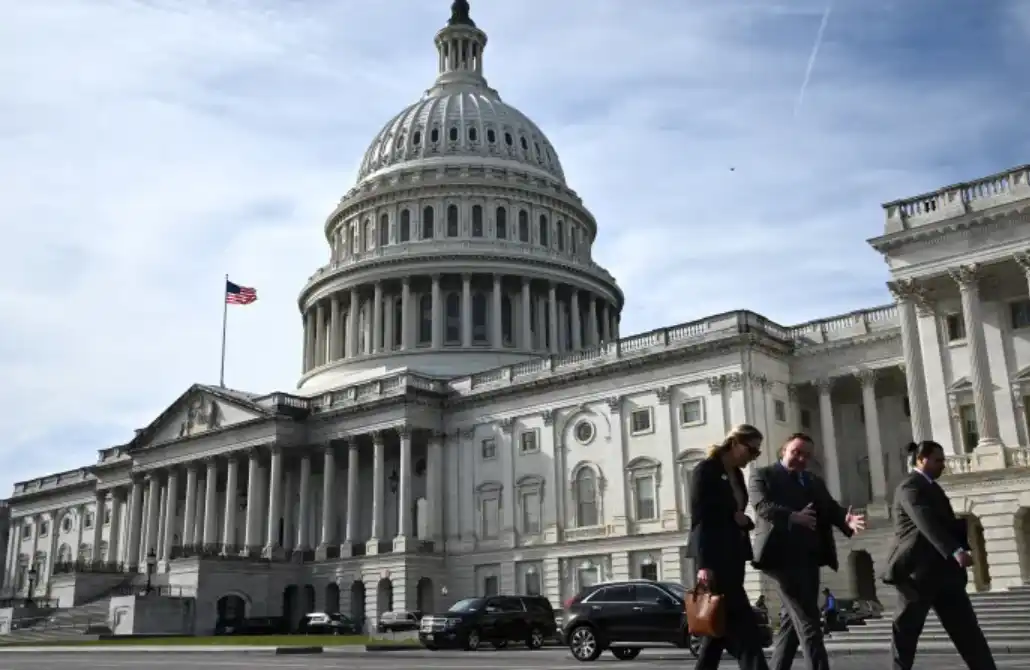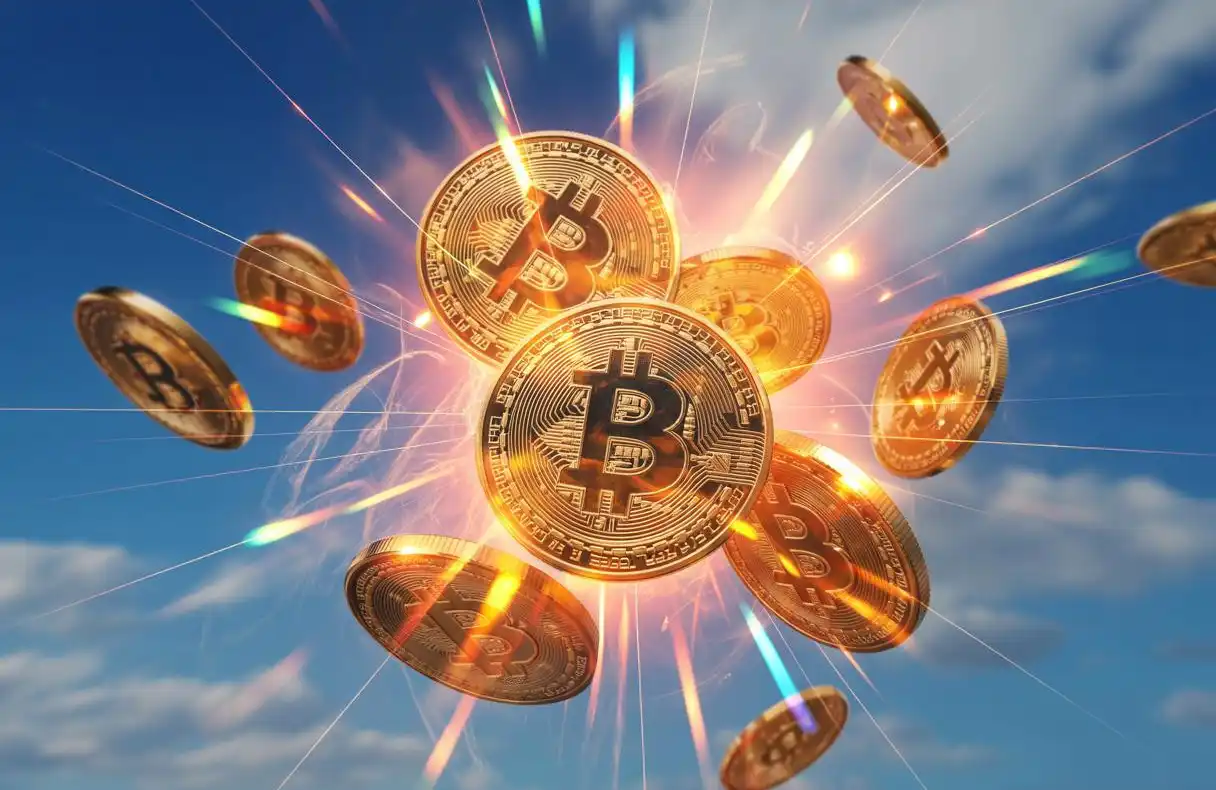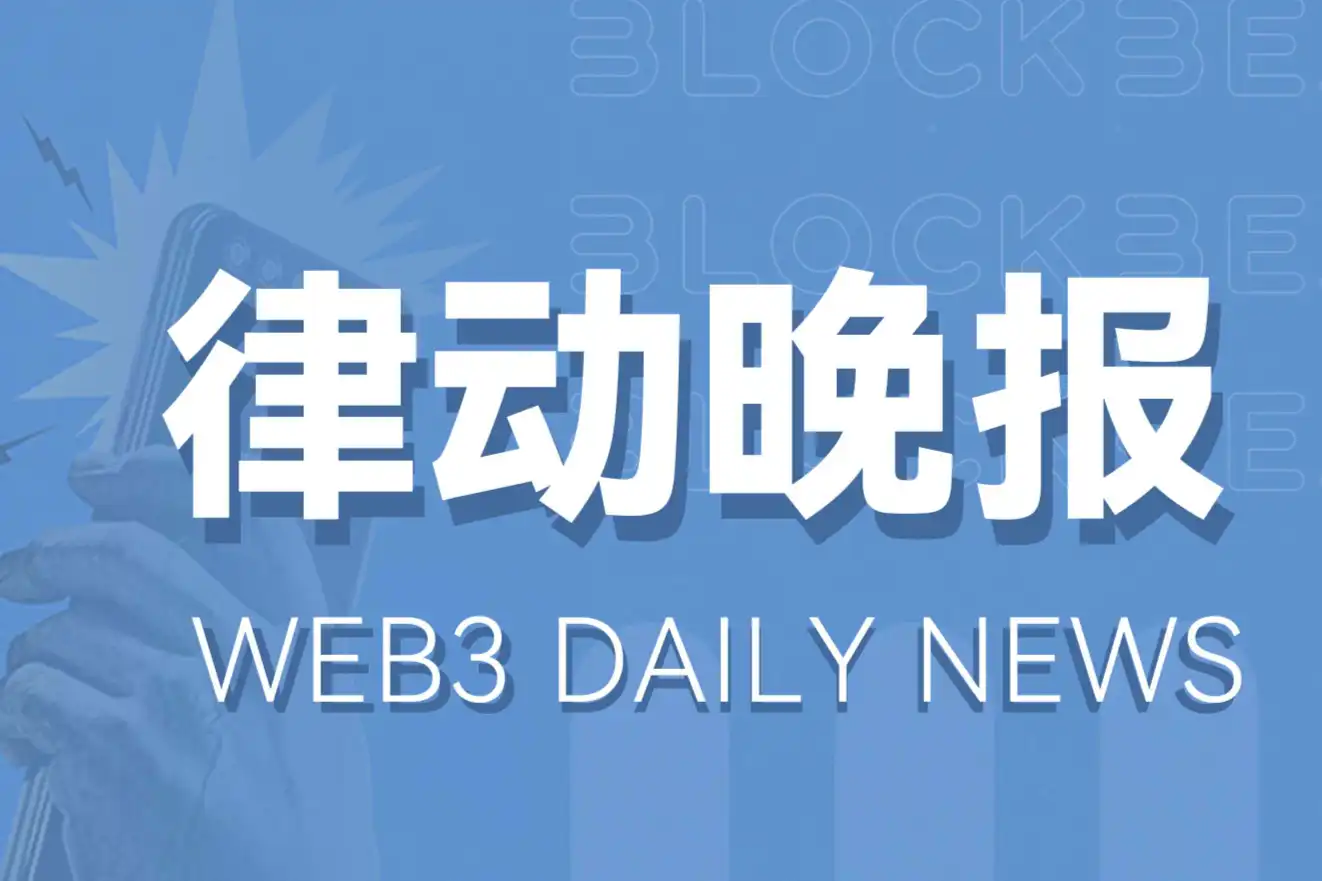Dalio warns: A new round of quantitative easing is pushing the market to the brink of a bubble
Author: @RayDalio
Translator: Dingdang, Odaily
Original Title: Why Is the Upcoming Quantitative Easing a Bubble-Making Machine?
Did you see the Federal Reserve announce it will stop Quantitative Tightening (QT) and initiate Quantitative Easing (QE)? Although officially described as a "technical operation," regardless, this is essentially an easing measure. For me, this is one of the key signals worth closely monitoring to track the progress of the "Big Debt Cycle" I described in my last book.
As Chairman Powell said: "…At some point, we want reserves to begin to grow gradually to accommodate the expansion of the banking system and the economy. So at some point, we will begin to increase reserves…"
How much reserves the Federal Reserve will actually increase is something we must focus on next.
Since one of the Fed's core responsibilities is to control the "size of the banking system" during asset bubbles, we need to pay attention not only to the pace of easing through rate cuts, but also to the speed of balance sheet expansion. More specifically, if the following situations occur in the future:
——A significant expansion of the balance sheet;
——Continuous rate cuts;
——A persistently large fiscal deficit;
Then it can be seen as a typical scenario where "the Treasury and the Fed join forces to stimulate the economy by monetizing government debt."
If this situation occurs while private credit and capital market credit creation remain strong, the stock market hits new highs, credit spreads are at low levels, unemployment is near historical lows, inflation is above target, and AI-related stocks are in a bubble phase (which my bubble indicators confirm), then in my view, the Fed's stimulus policy is nothing short of bubble-making.
Given that the government and many policymakers now advocate for significant loosening to achieve a "capitalist-style growth sprint" through monetary and fiscal policy; and considering the huge deficits, debt, and the growing supply-demand imbalance in bonds, I have every reason to suspect that this so-called "technical adjustment" may not be as simple as a technical issue.
I understand that the Fed is currently highly focused on "funding market risks," and therefore tends to prioritize market stability over aggressively fighting inflation, especially in the current political environment. But at the same time, whether this will evolve into a full-scale QE stimulus (i.e., large-scale net asset purchases) remains to be seen.
At this point, we should not ignore the fact that when the supply of U.S. Treasuries exceeds demand, the central bank is forced to "print money" to buy bonds, and the Treasury shortens the maturity of bond issuance to compensate for insufficient long-term bond demand, these phenomena are typical features of the "late stage of the Big Debt Cycle."
Although I have systematically explained its operating mechanism in my book "How Countries Go Broke: The Big Cycle," I want to point out that we are approaching a critical juncture in this cycle and briefly review the logic involved.
Give a Man a Fish vs. Teach a Man to Fish
I hope to help you understand what is happening by sharing my thoughts on market mechanisms. I will point out the logic I see, but how you judge and act is up to you, as this is more valuable to you and avoids me becoming your investment advisor (which is also more appropriate for me).
As you can see in the chart below, when the Fed or other central banks buy bonds, they release liquidity and lower real interest rates. What happens next depends on where this liquidity flows.

-
If liquidity mainly stays in financial asset markets, financial asset prices will be pushed up, real yields will fall, price-to-earnings ratios will expand, risk spreads will narrow, and gold prices will rise, resulting in "financial asset inflation." This benefits those holding financial assets, while those without assets are marginalized, thus widening the wealth gap.
-
Usually, some liquidity will be transmitted to the goods, services, and labor markets to some extent. However, in the current context of accelerated automation replacing labor, this transmission effect may be weaker than in the past. If inflation is pushed high enough, the rise in nominal interest rates may exceed the decline in real rates, thereby hitting both bonds and stocks in nominal and real terms.
The Essence of QE: Transmission Through Relative Prices
All fluctuations in financial markets stem from changes in relative attractiveness, not absolute levels.
Simply put, everyone has a certain amount of money and credit, and central banks use policy to influence these amounts. People's investment decisions depend on comparing the relative expected returns between different assets.
For example, people decide whether to borrow or lend money based on a comparison of borrowing costs and potential returns. Asset allocation choices mainly depend on the relative total returns of various options (i.e., asset yield + price change). For instance, gold yields 0%, while the 10-year U.S. Treasury yield is about 4%. If you expect gold to rise less than 4% per year, you would choose bonds; conversely, if you expect gold to rise more than 4%, gold becomes more attractive.
When judging the performance of gold or bonds, inflation must be considered, as inflation erodes purchasing power. Generally, the higher the inflation, the better gold performs—because currency depreciation reduces its purchasing power, while gold supply grows only modestly. This is why I always pay attention to money and credit supply, as well as the actions of the Fed and other central banks.
In the long run, the value of gold is highly correlated with inflation trends. The higher the inflation rate, the less attractive bonds become. For example, when inflation is 5% and bond yields are only 4%, the real yield on bonds is -1%, making bonds less attractive and gold more attractive. Therefore, the more money and credit issued by central banks, the higher I expect the inflation rate to be, and the less attractive bonds will be relative to gold.
All else being equal, if the Fed further expands QE, it is expected to lower real interest rates and increase liquidity by compressing risk premiums, lowering real yields, and pushing up price-to-earnings ratios, especially boosting the valuations of long-duration assets (such as technology, AI, and growth stocks) and inflation-resistant assets (such as gold and inflation-linked bonds). When inflation risks reemerge, companies with physical asset attributes (such as mining, infrastructure, energy, etc.) may outperform pure technology assets.
Of course, these effects are lagged. The decline in real interest rates triggered by QE will gradually become apparent after inflation expectations rise. Nominal valuations may still expand, but real returns will be weakened.
Therefore, we can reasonably expect that situations similar to the end of 1999 or 2010–2011 may recur—the liquidity-driven surge will eventually become too risky and have to be curbed. And during this frenzy phase, and just before the eventual tightening, is often the best time to sell.
This Time Is Different: The Fed Is Easing "Within a Bubble"
Although I expect the mechanism to operate as I described, the conditions for implementing QE this time are completely different from before. This time, the goal of easing is the formation of a bubble, not the bursting of one. More specifically, in the past, QE was implemented under the following conditions:
-
Asset valuations were falling, prices were low, or not overvalued;
-
The economy was shrinking or extremely weak;
-
Inflation was low or declining;
-
Debt and liquidity risks were prominent, and credit spreads were large.
So, QE used to "stimulate a recession."
But now, the situation is exactly the opposite:
-
Asset valuations remain high and continue to rise. For example, the S&P 500 earnings yield is 4.4%, the 10-year U.S. Treasury nominal yield is 4%, the real yield is about 1.8%, and the equity risk premium is only about 0.3%;
-
The economy is relatively robust (real growth of about 2% over the past year, unemployment rate only 4.3%);
-
Inflation is above target (slightly above 3%), but at a relatively moderate level, while deglobalization and tariff frictions further push up prices;
-
Credit is abundant, liquidity is ample, and credit spreads are near historical lows.

Therefore, this round of QE will not be "stimulating a recession," but "stimulating an economic bubble."
Let's look at how these mechanisms typically affect stocks, bonds, and gold.
Since government fiscal policy is currently highly stimulative (mainly due to the large existing debt, severe fiscal deficit, and the Treasury issuing a large amount of short-term Treasuries in a relatively short period), QE is essentially equivalent to monetizing government debt, not just injecting liquidity into the private sector.
This is the fundamental difference between the current situation and the past—it appears riskier and more inflationary. Overall, this looks like a bold and dangerous gamble: betting on growth, especially AI-driven growth, but supported by extremely loose fiscal, monetary, and regulatory policies. We must closely monitor this process in order to respond correctly in a complex macro environment.
Disclaimer: The content of this article solely reflects the author's opinion and does not represent the platform in any capacity. This article is not intended to serve as a reference for making investment decisions.
You may also like
Crypto Market Macro Report: US Government Shutdown Leads to Liquidity Contraction, Crypto Market Faces Structural Turning Point
In November 2025, the crypto market experienced a structural turning point. The U.S. government shutdown led to a contraction in liquidity, pulling about 20 billions USD out of the market and intensifying capital shortages in the venture capital sector. The macro environment remains pessimistic.

Market volatility intensifies: Why does Bitcoin still have a chance to reach $200,000 in Q4?
Institutional funds continue to buy despite volatility, targeting a price level of $200,000.

Key Market Intelligence for November 6: How Much Did You Miss?
1. On-chain funds: $61.9M flowed into Hyperliquid today; $54.4M flowed out of Arbitrum. 2. Largest price changes: $SAPIEN, $MMT. 3. Top news: ZEC surpassed $500, marking a 575% increase since Naval’s call.

Robinhood is building a financial institution tailored for the new generation
Robinhood's crypto revenue grew by 300% in the third quarter, with total revenue reaching $1.27 billions.

